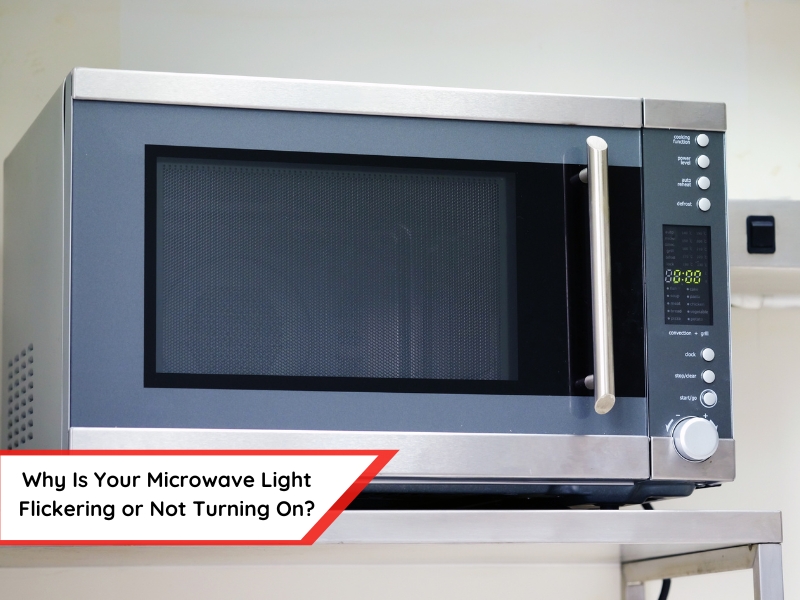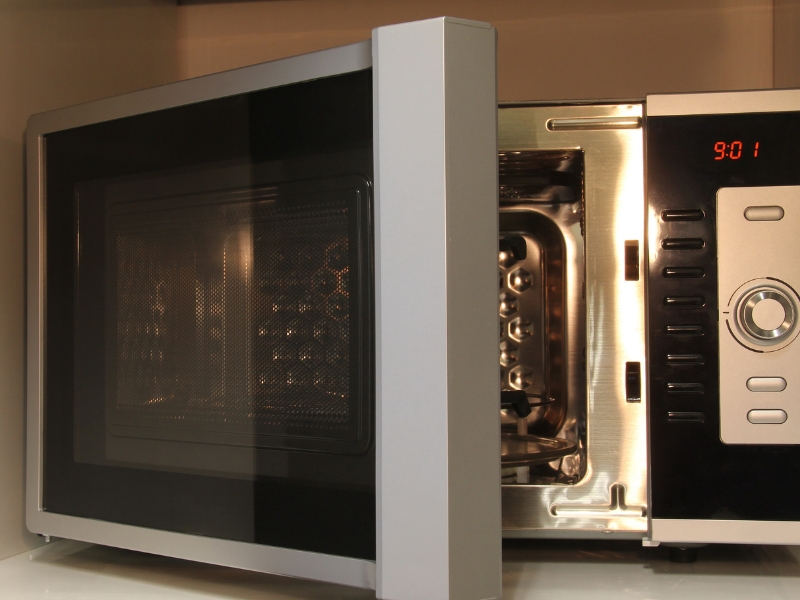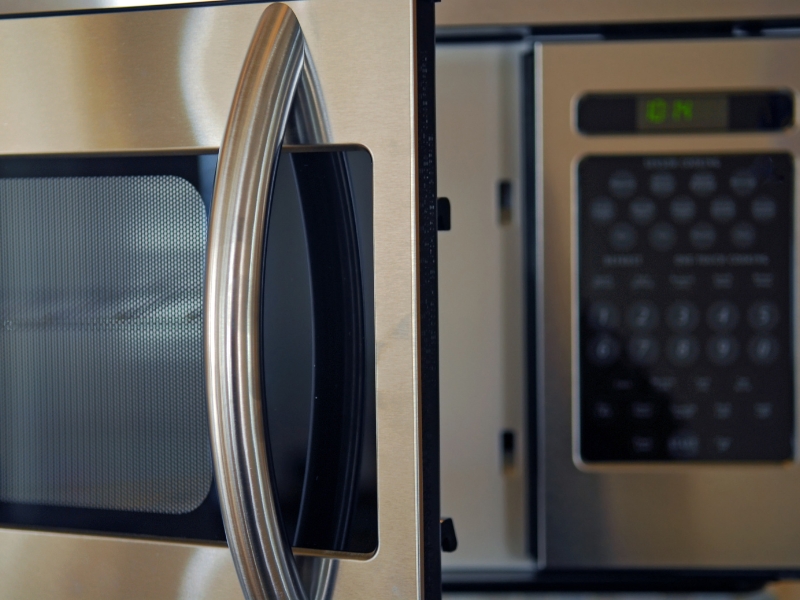Have you noticed the light inside your microwave flickering or not turning on? While it may seem minor, it can make cooking or reheating food more challenging. A flickering light could indicate an underlying issue that needs attention. This article explores the common causes of microwave light flickering, why it might stop working, and how to address these issues safely. It also offers advice on when to attempt a repair yourself and when to consider professional help.
What causes microwave light flickering?
Microwave light flickering is usually caused by one of a few common issues, most of which are relatively easy to diagnose. These are the leading causes of microwave light flickering:
- Burnt-out bulb: Regular use can cause the bulb to flicker or stop working.
- Loose wiring: Worn or loose electrical connections may cause intermittent flickering.
- Faulty switch: A defective light switch can cause flickering or prevent the light from turning on.
- Voltage fluctuations: Power surges can cause the light to flicker.
- Defective circuit board: A malfunctioning control board can disrupt the light’s power supply.
Flickering may indicate a simple issue, such as a burnt-out bulb, or a more complex electrical problem. Troubleshoot to identify the exact cause.
Why does the microwave light stop working completely?
If your microwave light stops working altogether, there could be several reasons behind it. These reasons typically involve components that have failed and need repair or replacement. Here are the common causes of a microwave light failing altogether:
- Burnt-out bulb: This is the most common and obvious cause. If the bulb no longer lights up, it must be replaced.
- Blown fuse: Microwaves have fuses designed to protect against power surges; if one blows, it can cut off power to the light, preventing it from working.
- Damaged wiring: If the internal wiring is loose or damaged, the light may not receive power, causing it to stop functioning.
- Faulty switch: A broken or disconnected light switch can prevent the light from turning on, even if the bulb is still in good condition.
- Malfunctioning control board: The control board distributes power to the microwave’s components. If it malfunctions, it can stop the light from working entirely.
If you’ve ruled out simple fixes like a burnt-out bulb and the light still isn’t working, it’s time to look into deeper issues. By understanding what causes a microwave to stop heating, you can identify potential faults and diagnose the problem more effectively.
Is it safe to continue using a microwave with a flickering light?
A flickering microwave light can be frustrating, but is it safe to continue using your microwave while the light flickers? Here’s what you need to consider:
- Safety risks: If electrical issues cause the flickering, there could be a risk of sparks, fire, or electric shock. In these cases, it’s better to stop using the microwave and have it inspected.
- Internal damage: Prolonged use of a microwave with a faulty light could damage internal components like the control board or wiring. It’s better to address the problem sooner rather than later.
- Temporary use: If the flickering is minor and you don’t notice any other issues with the microwave’s operation, you may be able to use it temporarily. However, the light should be fixed immediately to avoid further complications.
It’s important to recognise when to replace your microwave, especially if you experience persistent issues like recurring flickering or other malfunctions that can’t be easily fixed. If you’re unsure, stop using the microwave until the problem is repaired or checked by a professional.
How to replace the light bulb in your microwave?
Replacing the light bulb in your microwave is a straightforward task. Here’s a quick guide to help you:
- Unplug the microwave: Always disconnect the microwave from the power supply before attempting any repairs.
- Locate the light bulb: Check your microwave’s manual to find the exact location of the light bulb. It’s often located on the top or side of the microwave.
- Remove the cover: Use a screwdriver to remove the cover protecting the light bulb.
- Replace the bulb: Take out the old bulb and replace it with a new one of the same type and wattage.
- Reassemble the microwave: Once the new bulb is in place, reattach the cover and any other parts you removed.
- Test the light: Plug the microwave back in and test the new light to ensure it works.
If the light doesn’t work after replacing the bulb, it may indicate a more serious issue that requires professional attention. In this case, it’s advisable to consult expert microwave light bulb replacement services to ensure the problem is diagnosed and resolved correctly.
When should you call a professional to fix your microwave light?
You can handle microwave repairs in some situations, but sometimes, calling in a professional is best. Here’s when you should consider getting expert help:
| Issue | Solution |
| Electrical issues | Faulty wiring or voltage problems can be hazardous—stop using the microwave and consult an expert. |
| Blown fuses or circuit board | A technician can safely replace damaged fuses or faulty control boards. |
| Persistent problems | If basic fixes don’t work, seek professional help. |
| Under warranty | DIY repairs may void your warranty—contact the manufacturer or retailer for assistance |
Are there other potential issues that affect microwave performance?
Aside from light flickering, several other factors can impact your microwave’s performance. It is important to consider electrical safety in the home when troubleshooting appliances, as electrical issues could be the root cause of some problems. These include:
- Microwave not heating: If the microwave isn’t heating food, it could be due to a malfunctioning magnetron or other internal components.
- Uneven heating: If your microwave heats food unevenly, there could be issues with the turntable or microwave settings.
- Noisy operation: Strange or loud sounds coming from the microwave often signal issues with the fan, motor, or sometimes the magnetron. Electrical problems, including wiring issues or faulty components, can also lead to unusual noises.
Conclusion
Microwave light flickering is a common issue that can usually be resolved with a few simple steps. However, if the problem continues or appears to be related to electrical concerns, it’s advisable to consult a professional to ensure your safety and the proper functioning of the appliance.
Looking for reliable microwave solutions? Discover how Microwave Factory can help with your needs today.



